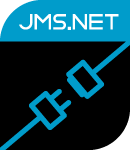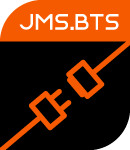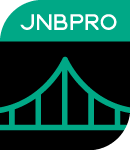Integrating Jakarta EE, the Enterprise Edition of Java, and .NET
Java EE has a new name: Jakarta EE.
No matter whether it’s called Jakarta EE, EE4J, Java EE, or even J2EE (remember that?), JNBridge can help you integrate your Enterprise Java with anything .NET.
 JMS Adapter for .NET
JMS Adapter for .NET
The JNBridge JMS Adapter for .NET enables you to connect any .NET project to a new or existing JMS infrastructure, so that your .NET code can send messages to, or receive messages from, your Java messaging infrastructure.
For example, a transportation and relocation company uses the adapter to integrate between their JMS infrastructure and a variety of .NET application endpoints, including portals based on Sharepoint Server and ASP.NET.
 JMS Adapter for BizTalk
JMS Adapter for BizTalk
With the JNBridge JMS Adapter for BizTalk, your BizTalk orchestrations can seamlessly share messages with Enterprise Java infrastructure. Usually, no programming is required – just fill in a bunch of parameters in a property sheet, and you’re off.
For example, a pharmaceutical company eliminated manual record keeping by integrating a third-party Apache ActiveMQ-based ERP system with BizTalk via JMS and the adapter.
 The JMS adapters represent the most common interop scenario between .NET and Enterprise Java, so it made sense for us to go the extra distance and do as much of the JMS-specific programming as possible so our users wouldn’t have to.
The JMS adapters represent the most common interop scenario between .NET and Enterprise Java, so it made sense for us to go the extra distance and do as much of the JMS-specific programming as possible so our users wouldn’t have to.
The adapters are designed so that you don’t need to know anything about the JMS API or about JMS programming to get them to work, and they support any standard Java application server.
JNBridge doesn’t just connect your .NET with JMS :
 JNBridgePro
JNBridgePro
You can use JNBridgePro to connect between anything .NET and any Java API, including any Enterprise Java API.
For example, if you have Enterprise Java Beans, you can call those EJBs from .NET applications, or you can have the EJBs themselves call .NET libraries, regardless of the Java application server being used, including Oracle WebLogic, IBM WebSphere, WildFly (JBoss), GlassFish, Apache TomEE, and more. You can write servlets that call .NET code, and you can call JMX (Java Management Extensions) APIs from a .NET-based management dashboard.
Enterprise Java has expanded to include far more than Jakarta EE; it also includes the many open-source frameworks that have been built on top of Java. Any Java API can be accessed from .NET using JNBridgePro, and any application written using a Java framework can use JNBridgePro to access .NET libraries. That includes the Spring Framework, Apache projects like Apache Hadoop (here and here), Kafka, and Spark, and Web frameworks like Grails, Play, and Vaadin.
To summarize, it doesn’t matter what your Enterprise Java platform is called. Whether it’s Jakarta.EE, Java EE, Spring, Grails, or something else, JNBridgePro will help you connect it with .NET, efficiently and with a minimum of fuss.
We’ve provided many examples showing how JNBridge products can integrate .NET code with Enterprise Java. Is there a scenario you need an example for? Let us know.
